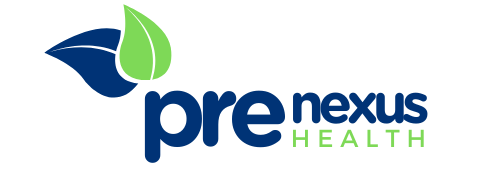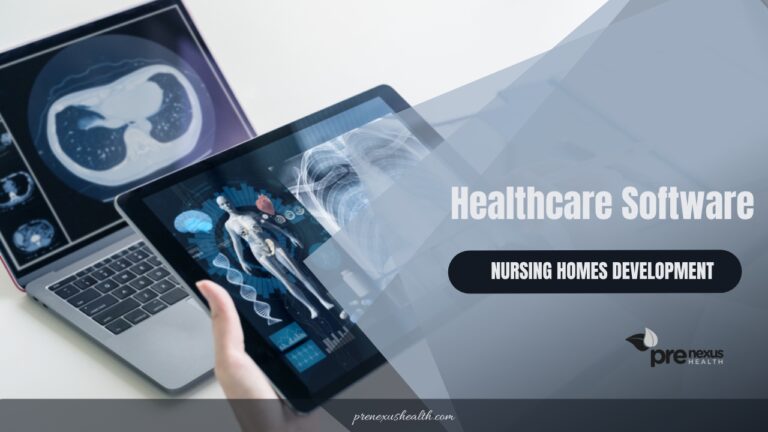Today, I’ll share some insights on developing healthcare software for nursing homes. It’s a topic close to my heart, given the profound impact such software can have on improving long-term care.
Let’s cut straight to the chase and explore the crucial aspects of this exciting field.
Purpose and Need
At its core, the purpose of nursing home software is pretty straightforward. It’s about simplifying health and homecare business operations. This software can cut down on the mountain of paperwork and allow you to manage everything online – from appointment scheduling and billing to staff scheduling and patient intake.
The need for such software has never been more apparent, with an aging population, a rise in chronic diseases, and a pressing demand for more efficient administrative processes and better data management.
For a deeper insight into crafting software that not only meets but exceeds the demands of modern healthcare management, particularly in nursing homes, a visit to Empeek offers knowledge and examples of excellence in this domain.
Goal
The primary aim here is two-fold: improving the quality and consistency of long-term care services while also keeping an eye on optimizing business costs.
How? By automating routine tasks, elevating care quality, and ensuring that care and resident satisfaction are always front and center.
Tips for Seamless Development and Implementation
- Focus on User-Friendliness: Software should be intuitive, making it easy for all users, regardless of their tech knowledge.
- Ensure Strong Security Measures: Patient data is sensitive. Implementing rigorous security protocols is an absolute must.
- Adaptability and Scalability: As needs evolve, so should the software. Building with adaptability and scalability in mind is of the essence.
- Comprehensive Training Programs: Ensure everyone’s comfortable and proficient with the new system through detailed training sessions. When people who operate healthcare software have a deeper understanding of how it works, they are more likely to react timely and provide the necessary care.
- Feedback Loops: Regular feedback from users can guide constant improvements, making the software even more effective over time. If there are some bugs, users can report them and aid in making the software as efficient as it can be.
- Integration Capabilities: The ability to integrate with other systems and software can significantly improve efficiency.
- Attention to Legal Compliance: Stay informed about the legal requirements to ensure the software complies with all relevant healthcare regulations. This is a step that you absolutely must follow under all circumstances, as it is proof of your credibility.
- Focus on Personalization: Creating the software to meet the unique needs of each nursing home can lead to better outcomes.
- Prioritize Reliability and Support: Reliable software support is key to addressing any issues swiftly and keeping operations smooth.
- Keep the End Goal in Sight: Ultimately, the software should aim to improve care quality and operational efficiency. This will improve the lives of residents and make staff workflows more manageable.
Main Features and Benefits
- Care Coordination: This includes tools for assessments, progress reports, care planning, and fostering better collaboration among staff. This will ensure that everyone’s on the same page.
- Facility Scheduling and Management: It helps the medical team to efficiently schedule facilities for care needs and set important reminders.
- Billing Management: A unified system that brings together accounting and operational procedures for a smoother financial management experience.
- ePrescribing: This is a revolutionary feature in reducing medication errors by facilitating electronic prescriptions of medications and care plans.
- Telehealth Monitoring: Supports remote monitoring of patient vitals, which has become indispensable, especially in times like these.
- Inventory and Stock Management: Keeps tabs on stock levels and purchase orders, ensuring that supplies never run low.
- Patient Records and Medication Tracking: This is central to creating and managing detailed patient health records and care plans.
Market Growth and Software Examples
The trajectory for the long-term care software market is on a steep incline, expected to grow from $1.84 billion in 2020 to a whopping $3.32 billion by 2025, partly propelled by the challenges and innovations brought about by the COVID-19 pandemic.
Some noteworthy software solutions like Napier, Matrix Care, AL Advantage Software, and PointClickCare have set the bar high, offering a glimpse into the potential and versatility of nursing home management tools. Essentially, not only this type of software is helpful for people in need, but it can be also highly profitable.
Challenges and Solutions
Nursing homes aren’t without their share of hurdles, spanning operational, financial, and clinical challenges. However, the right software solution can serve as a powerful ally, helping resolve issues related to managing referrals, care coordination, reimbursement, staffing, and upholding infection control standards.
Implementation Hurdles
Adopting new technology often comes with its set of challenges. Resistance to change, technical difficulties, and the initial learning curve can be significant obstacles.
However, approaching these hurdles with empathy, clear communication, and support can facilitate a smoother transition. Eventually, staff will get a grasp of the software, and it will make everyone’s life easier.
Strategies for Success
- Engage Staff Early: Involving staff members in the software selection and development process can foster a sense of ownership and easof e adoption.
- Clear Communication: Keep everyone informed about the benefits, changes, and expectations to alleviate concerns and build support.
- Step-by-step Training: Break down the training into manageable sections. This approach helps retain information and reduces feeling overwhelmed.
Final Words
The process of developing and implementing nursing home software is filled with opportunities to make a significant difference in long-term care.
Prioritizing the needs of both the caregivers and the residents will let developers create solutions that not only modernize operations but also impact the quality of care.
I am a retired internal medicine physician named Dr. William Tousignant. With over three decades of experience in the field of geriatric care, I specialized in diagnosing and managing health issues among senior patients throughout my career.





